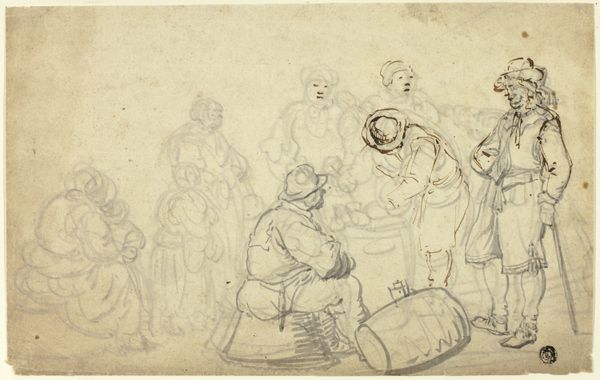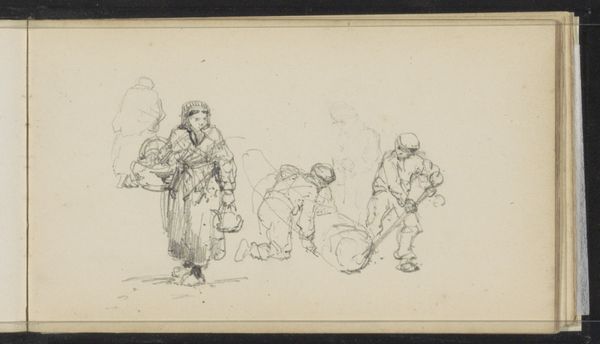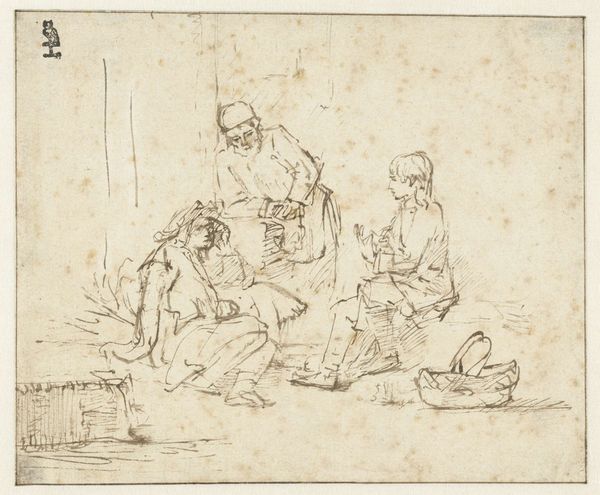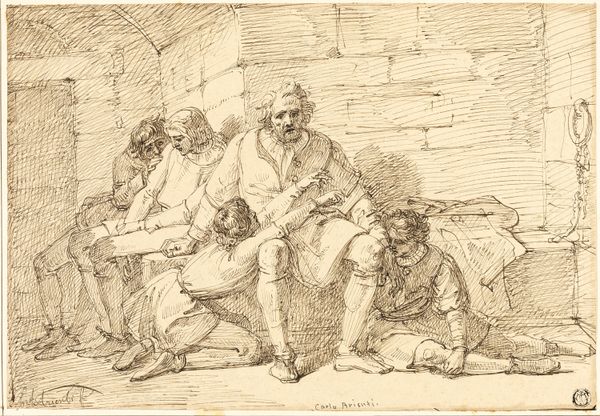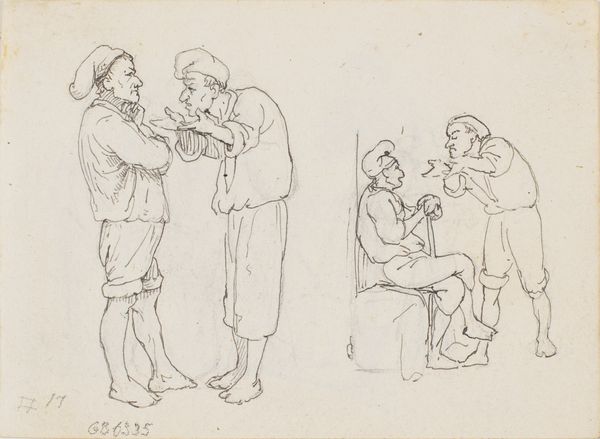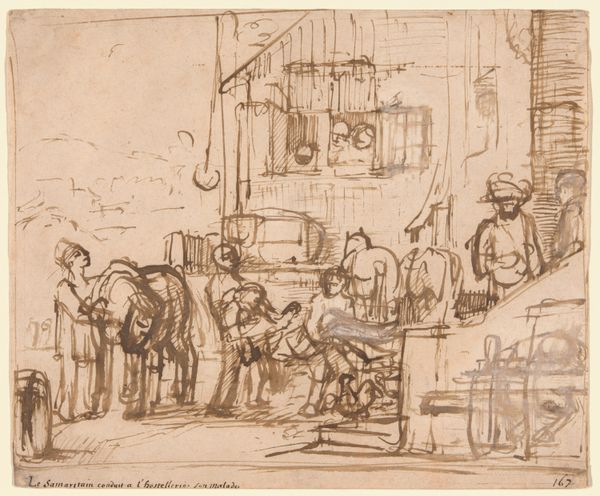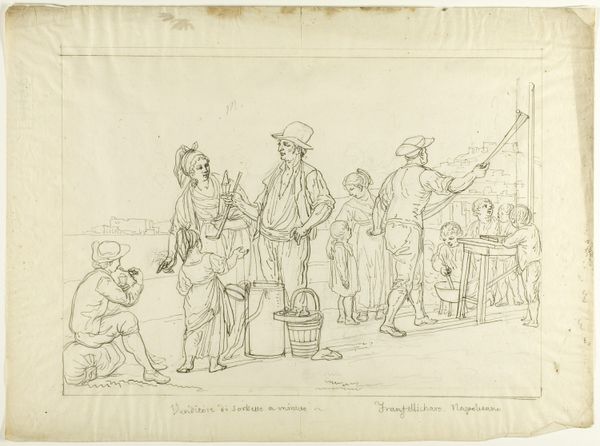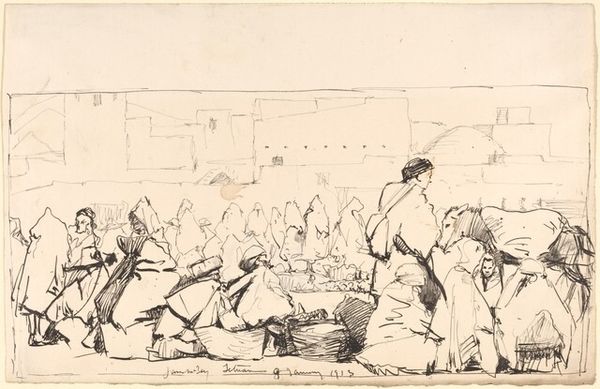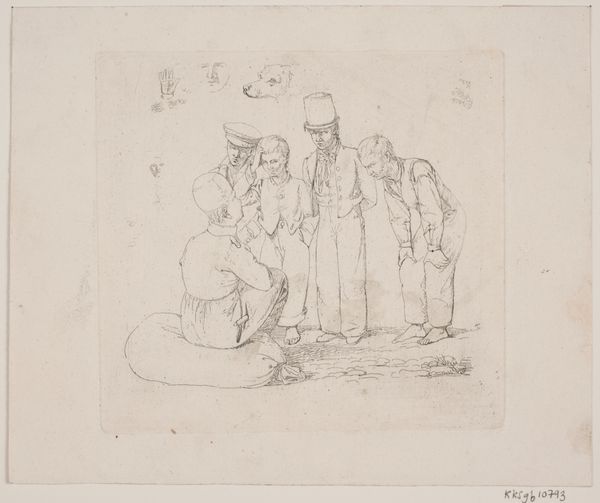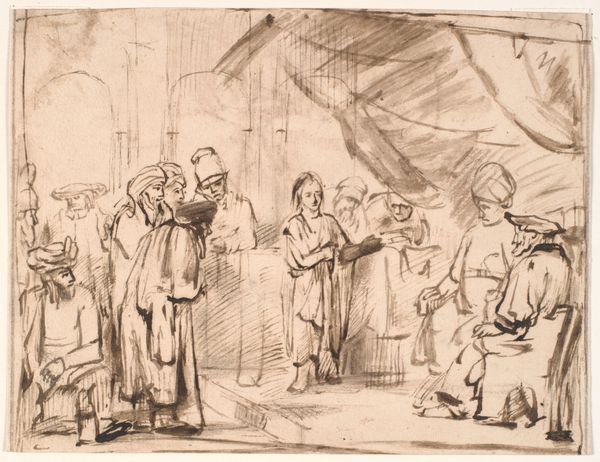
drawing, ink
#
drawing
#
narrative-art
#
dutch-golden-age
#
pencil sketch
#
figuration
#
ink
#
line
#
sketchbook drawing
#
genre-painting
Dimensions: height 187 mm, width 251 mm
Copyright: Rijks Museum: Open Domain
Curator: At first glance, I am struck by the density of the figures and how enclosed they are, almost as if the space is shrinking around them, heightening the narrative's intensity. Editor: Indeed. What we are looking at is "Herbergscène," or "Tavern Scene," a pen and brown ink drawing from the 1640s by Philips Koninck, held at the Rijksmuseum. Koninck, though more renowned for his panoramic landscapes, also dabbled in genre scenes like this one, which offers a fascinating snapshot into 17th-century Dutch social life. Curator: The musical figure to the left, with that sly grin, certainly holds a familiar symbolism—that of merriment, but often laced with underlying moral ambiguity, perhaps even indulgence or folly. Music here signifies the ephemeral nature of pleasure. Editor: That’s a keen observation. These tavern scenes were incredibly popular at the time, acting almost like visual morality plays. They reflected a society grappling with new wealth and the temptations that came with it. Koninck captures this tension expertly. Look at the downcast man in the foreground, he looks miserable. Perhaps reflecting on the evening's events or possibly even already feeling the consequences. Curator: Absolutely, the central seated figure, weighed down with palpable emotion, amplifies the visual experience. Is this shame, regret or simple sadness? Also, what of the man looking out of the window? He is almost invisible, a background observer or even more symbolically a character waiting for something. All of them remind me of stock characters in traditional farces and morality tales. Editor: Yes, that window figure is intriguing. It highlights a kind of voyeurism. The very act of observing the scene mirrors how the Dutch viewed themselves, both partaking in and judging these everyday indulgences. In terms of historical context, this era saw the rise of the Dutch middle class and the rise of a consumer culture that had never existed before. Art began exploring these newly democratized leisure spaces, for everyone, rich and poor. Curator: So this artwork really stands at a fascinating cultural crossroads, navigating the familiar symbols and moral messages against emerging social norms. And it reminds us that visual codes and narrative art can reveal a complex relationship between personal emotion and public spectacle. Editor: Indeed, the Dutch Golden Age had complex dynamics and seeing it here in the 1640's from this particular hand is a pleasure. These are often less flattering representations, making for complex dialogues around behavior, access, class and community.
Comments
No comments
Be the first to comment and join the conversation on the ultimate creative platform.
